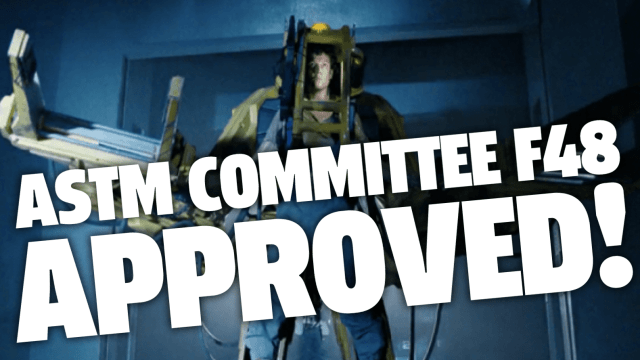Advanced technology is just science fiction until some international standards group forms a committee with an anonymously bureaucratic name to make sure every mind-blowing new advancement is nice and safe and boring, just like it should be. This is now happening to a very exciting technology that was firmly science fiction not so long ago: robotic, strength-enhancing exoskeletons.
The international standards group is the American Society for Testing and Materials (ASTM), and the committee is called Committee F48 on Exoskeletons and Exosuits, and they want to
“…develop voluntary consensus standards for exoskeletons and exosuits. Subcommittees will address safety, quality, performance, ergonomics and terminology for systems and components during the full life cycle of the product – from before usage, to maintenance, to disposal – including, security and information technology considerations. The activities cover industrial, emergency response, medical, military and consumer applications covering passive and active systems, enhancing and decreasing effects systems, as well as systems with physical and cognitive integration.”
The committee has been around since 2017, and they’re currently in the process of establishing a comprehensive standards guide, which they must be excited about, because a press release was sent out today to let the world know, in case any of you are considering an exosuit purchase.
There’s a lot of reasons making these standards will be tricky, but it looks like it’s mostly due to the great variety of applications, according to the press release:
“The biggest challenge in creating this standard is that exoskeletons change greatly depending on the task the exoskeleton is designed to help,” says Purcell. “For instance, an industrial exoskeleton is a totally different design from one used for medical rehabilitation use. The proposed standard will need to cover all types and industries.”
That’s a good point; you don’t want to use the exoskeleton that lets grandpa still jitterbug to lift and throw around dumpsters full of scrap metal.
Once this standards guide is completed, it seems like it’ll be known as ASTM WK68719.
It’s strange, but it’s because of this ostensibly boring, regulation-slathered announcement that I’m sort of excited about the idea of exoskeltons again.
